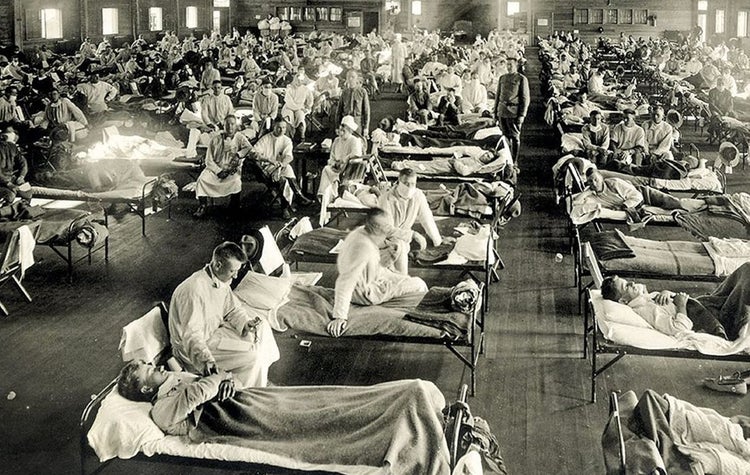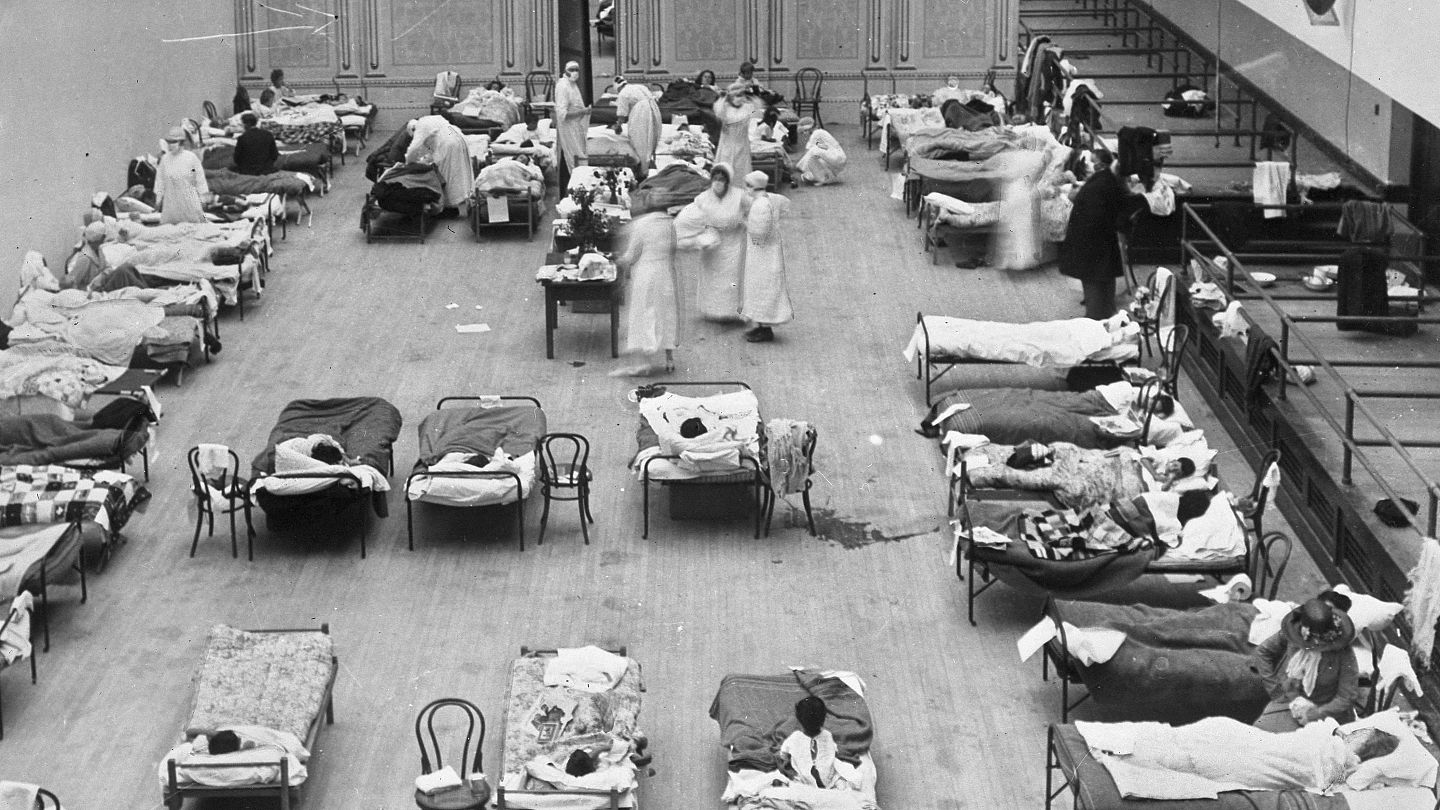En 1918 no había vacuna contra la influenza La vacuna contra el virus de la gripe española no fue descubierta hasta los años cuarenta. El método contra el contagio que funcionó en la pandemia de gripe española hace un siglo y hoy es clave contra el coronavirus Elinor Elisberg Miller tenía tres años en 1918 cuando casi un.
 La Mal Llamada Gripe Espanola De 1918 1919 Una Pandemia Que Nos Resulta Cercana
La Mal Llamada Gripe Espanola De 1918 1919 Una Pandemia Que Nos Resulta Cercana
Un mes después más de 10000 personas habían muerto de.

Gripe española 1918. A pesar de su nombre los investigadores creen que lo más probable es que la gripe española se haya originado en Estados Unidos. La Pandemia de Gripe Española de 1918-1920. La gran epidemia de gripe de 1918 Gripe española En plena Primera Guerra Mundial 1914-1918 millones de personas murieron como consecuencia de una.
Los científicos no han. De janeiro de 1918 a dezembro de 1920 infectou uma estimativa de 500 milhões de pessoas cerca de um quarto da população mundial na época. La conocida como gripe española provocó al menos 50 millones de muertes e infectó a unos 500 millones de personas en todo el mundo entre 1918 y.
En los años transcurridos entre dos pandemias letales la mal llamada gripe española del año 1918 y el covid-19 el mundo ha aprendido sobre virus curó varias enfermedades elaboró vacunas. Las condiciones de hacinamiento y falta de higiene crearon un caldo de cultivo fértil para el virus. A gripe espanhola também conhecida como gripe de 1918 foi uma vasta e mortal pandemia do vírus influenza.
Semejanzas y diferencias con la gripe española de 1918 El mundo sufre una pandemia inesperada llamada coronavirus de la que no cesa en su lucha por vencer. Si bien no hay un consenso universal respecto de dónde se originó el virus se propagó a nivel mundial durante 1918-1919. El distanciamiento social demostró ser extremadamente importante en la pandemia de gripe de 1918.
Esta afectó a unos 500 millones de personas y entre 1918 y 1920 provocó la muerte de alrededor de 50 millones. Pandemia de 1918 virus H1N1 La pandemia de influenza de 1918 fue la pandemia más grave de la historia reciente. Fue causada por el virus H1N1 con genes de origen aviar.
La letal pandemia que entre 1918 y 1920 provocó la muerte de más de 50 millones de personas en todo el mundo ha pasado a la historia con el sobrenombre de gripe española. Era otoño de 1918 cuando José Ameal Pepe se contagió con el virus de una enfermedad que todo el mundo acabó llamando gripe española y que pasó a. Uno de los primeros casos conocidos ocurrió el 11 de marzo de 1918 en la base militar Fort Riley Kansas.
La gripe la causan varios virus muy parecidos entre sí pero sólo una cepa el tipo A está relacionada con las epidemias mortalesA pesar de conocerse como gripe española los primeros casos se registraron en Estados Unidos durante el último año de la Primera Guerra MundialEn marzo de 1918 el país llevaba once meses en guerra contra Alemania y las potencias centrales y su exiguo. Pero algunos historiadores recuerdan que hace poco más de un siglo en 1918 el país también fue a las urnas en medio de una pandemia global devastadora la de la llamada gripe española. La gripe española fue un brote de influenza virus A del subtipo H1N1 que causó la pandemia más grave del siglo XX.
